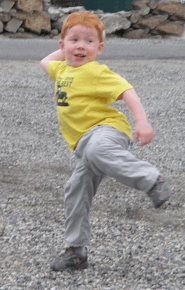Qigong for schoolchildren: a pilot study

Witt C, Becker M, Bandelin K, Soellner R, Willich SN.
Institute of Social Medicine, Epidemiology, and Health Economics, Charité University Medical Center, Berlin, Germany. claudia.witt@charite.de
OBJECTIVE:
To evaluate the effects of qigong lessons on schoolchildren in terms of their achievements at school, social behavior, and general health.
DESIGN:
A controlled intervention pilot study was conducted with children in two second-grade classes at an elementary school and in two eighth-grade classes at a high school.
SETTING/LOCATION AND INTERVENTION:
One class from each school received qigong lessons for 20 minutes at least twice weekly over a period of 6 months, while the control class from the same school received no intervention. Two additional classes at two elementary schools participated in the qualitative analysis only.
MEASURES:
Teachers, parents, and students answered standardized questionnaires at the beginning of the study and after 6 months, covering complaints, concentration, creativity, grades, quality of life (QOL) (assessed by the KINDL questionnaire), and social behavior. In addition to this quantitative study, we conducted in-depth, semi-structured interviews with all participating teachers at the end of the project to evaluate individual effects.
RESULTS:
Of a total of 90 participants in the study (52% boys and 48% girls), 40 students attended elementary school (20 per class, mean age 7.4 +/- 0.5 years) and 50 high school (25 per class, mean age 13 +/- 0.8 years). Factor analysis yielded three scales for the teacher questionnaire (learning process, social behavior, appropriate behavior) and four scales for the parent questionnaire (creativity, concentration, well-being, restlessness). The qigong group showed significantly better results in the teacher questionnaire (especially for appropriate behavior) and in grades in comparison to the control group, but no effect was found in the parent questionnaire, medical complaints, sick days, or in the children’s assessment of QOL. Qualitative analyses indicated a relevant decrease of individual complaints for some children in the qigong group.
CONCLUSIONS:
The feasibility of integrating qigong in school lessons was shown. Six months after starting qigong lessons, schoolchildren improved in social behavior and showed stable grades, while inappropriate behavior decreased, compared to the control. Combining quantitative and qualitative research methods appeared to be useful to detect the effects of qigong in individuals. Due to the limitations of our pilot study, further studies with larger sample sizes and long-term follow-up are needed.
– Source : www.ncbi.nlm.nih.gov




